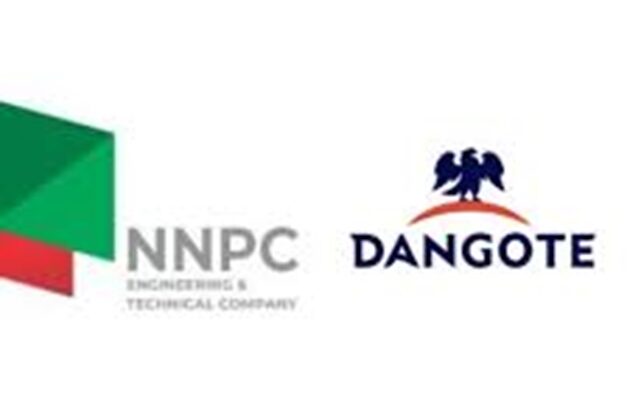As a holder of a Chemical/Petroleum Technology degree, I find it necessary to add my voice to those of various chemists and analysts who have criticized the poorly scripted propaganda suggesting that Dangote Refinery fuel burns slower than NNPC fuel.
A majority of people seem to believe this scripted claim, not because it is true but because it appeals to their money-saving mindset when buying fuel. However, they are unaware of the risks this poses to both engine performance and maintenance even if it was true. While some opinions on this matter have been driven purely by social media hype, my perspective is based on extensive practical and theoretical experience in petroleum product analysis.
Additionally, I have worked offshore in Lagos with a petroleum product inspection firm, where we conducted petroleum product analyses to determine whether a product met specification or was off-spec. During this period, I worked at NNPC Atlas Cove Jetty, and other private oil and gas facilities in Lagos State. Our primary responsibility was to verify the quality and quantity of petroleum products imported into Nigeria. Any product found to be off-spec would be rejected by the receiving companies. Before any cargo could discharge its contents, both the Department of Petroleum Resources (DPR), as it was then known, and NNPC had to approve our analytical report on the product.
A recent viral video by Valor claimed that gasoline from NNPC retail outlets burns faster than that sold at MRS filling stations, which are affiliated with Dangote Refinery. However, the physical demonstration in the video was neither analytical nor practical evidence of gasoline quality. Rather, it appears to be one of Dangote’s strategies to discredit competitors.The efficiency of gasoline combustion in an engine depends on multiple factors, including Air-Fuel Ratio, Engine Design, Compression Ratio, Fuel Quality and Octane Rating and others.
Fuel quality refers to its composition, purity, and performance characteristics, all of which impact engine efficiency, emissions, and longevity. High-quality fuel should burn cleanly with minimal carbon deposits, Contain detergents to prevent engine buildup, have a stable chemical composition to prevent fuel degradation and meet industry standards (e.g., ASTM, EN, or national regulations)
Octane rating, on the other hand, measures a fuel’s resistance to knocking (pre-detonation) during combustion. Knocking occurs when the air-fuel mixture ignites prematurely, leading to inefficient combustion and potential engine damage.
There are basically three primary octane rating methods:
- Research Octane Number (RON) – Measured under low-load conditions, common in Europe and Asia
- Motor Octane Number (MON) – Measured under high-load conditions, often lower than RON
- Anti-Knock Index (AKI) – The average of RON and MON (AKI = (RON + MON) / 2), used in the U.S.
Higher-octane fuel (91–98 RON) resists knocking better and is required for high-performance or turbocharged engines with higher compression ratios. This is particularly useful in cold regions. Lower-octane fuel (87–89 RON) is suitable for standard engines with lower compression ratios and specific atmospheric conditions.
Regular PMS (Petrol) typically has an octane rating between 85 and 88, while Mid-Grade PMS falls between 88 and 90. Premium PMS has an octane rating above 90.
There is no doubt that Dangote Refinery produces fuel that may have a higher octane rating because it is expected for export to foreign countries particularly countries with very low temperatures, but both Dangote and NNPC fuels meet standard octane ratings as specified by API and ASTM.
On the issues with fuel that burns too slow, Valor’s video failed to highlight the potential drawbacks of using fuel that burns too slowly. While slower-burning fuel generally allows for controlled combustion, if the burn is too slow relative to the engine’s design, several issues can arise which includes:
Reduced Efficiency and Power – If combustion does not reach peak pressure at the right time, less force is applied to the piston, reducing engine power and efficiency.
Incomplete Combustion – Fuel that doesn’t burn completely may exit the combustion chamber unburned, leading to energy loss, higher emissions, and carbon buildup.
Deposit Formation – Lower combustion temperatures fail to burn off deposits, leading to buildup on spark plugs and other engine components, which can increase maintenance costs.
Using slow-burning fuel can cause Engine knocking/detonation, Jerking or hesitation when accelerating, Frequent spark plug replacements due to soot buildup
While the ₦18 price difference between Dangote fuel and NNPC fuel may seem attractive, it is insufficient to cover the long-term cost of engine repairs caused by incomplete combustion associated with fuel that burns slowly. If you prefer slow-burning fuel, be prepared to have a permanent friendship with your mechanic.
Today, we have a transformed NNPC, characterized by efficiency, productivity, and competitiveness under President Bola Ahmed Tinubu’s Renewed Hope Agenda. The revamping of the Port Harcourt and Warri refineries, along with ongoing efforts to bring others into production, stands as a notable achievement of the GCEO, Engineer Mele Kyari. This initiative has fostered healthy competition in Nigeria’s downstream sector, which is expected to lead to a significant reduction in petroleum product prices, ultimately benefiting the common man. The industry is far too vastfor monopolistic control by a single entity.
Beyond the strategic reforms in the downstream sector, the upstream oil and gas industry has also witnessed remarkable progress. For the first time since 2022, Nigeria’s crude oil production has risen from 1.1 million barrels per day (bopd) to 1.75 million bopd in January 2025, successfully meeting the OPEC production quota. This growth is a direct result of the sustained fight against sabotage, including the crackdown on illegal refineries, pipeline vandalism, and crude oil theft by the NNPC in recent times.
– ONOGWU Muhammed, ANIPR




